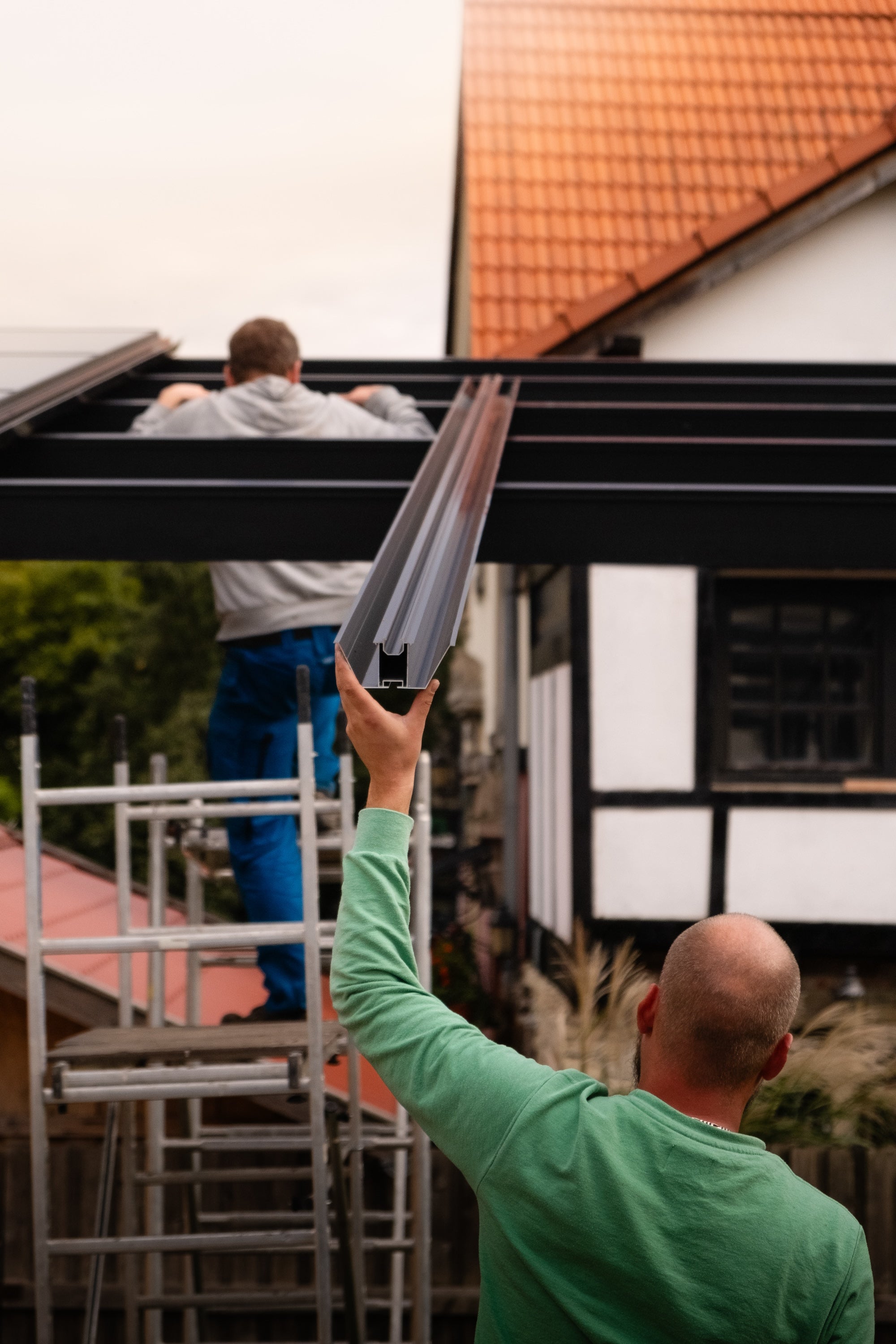Frequently Asked Questions
Collapsible content

What is the total cost of the carport including installation, and how long will it take to return the cost for the investment in energy savings?
The total price of a carport with solar assembly and installation is almost identical to that of a classic rooftop solar plant of comparable performance. With the bonus that you get a covered car parking. Return on investment cannot be easily determined. It depends on several factors: the price of electricity, the consumption profile, interest on any loan. These quantities can change unpredictably over time and therefore the return can only be estimated based on current values. The implementation company should be able to model the return on investment for you.
How many solar panels are needed to cover the energy needs of a household or to charge an electric car?
The performance of solar plants depends on many variables and above all on the consumption profile. A typical household of four will usually use 10kW. With an electric car and, for example, a heat pump, this can be even higher. Today there are already solutions on the market for smart selling of the solar energy surplus based on the spot price, which increase the return on investment even more.
What is the lifespan of solar panels and carport construction? What are the warranties and service conditions?
The lifespan of the panels is several decades. The construction of the carport is made of aluminum, which is not subject to corrosion and its service life will definitely last a lifetime. Today, the standard manufacturer's guarantees are 15 years for the panels and 10 years for the carport. However, the carport has a material warranty, not an assembly warranty. In the end the implementer is responsible.
How difficult is the installation and what are the maintenance requirements? Are special permits or modifications required on the property?
More skilled customers can do the installation of the carport structure and the assembly of the panels themselves. It requires 2 people and the approximate assembly time is 8-16 hours. It is necessary to prepare concrete footings for anchoring the columns at least one day in advance. Electrical assembly and PV installation itself is not included in this and must be carried out by trained PV installation professionals. For buildings up to 25m2 built-up area according to § 103 paragraph 1) and Building Act 183/2006 Coll. no building permit or notification is required. A carport for 4 cars and a commercial carport for 5 cars already exceeds this area and it is necessary to ensure according to § 103 paragraph 1) of the Building Act 183/2006 Coll. decision on the location of the building, or zoning decision and building permit. The building authority can merge both proceedings.
Can the carport be expanded or connected to other systems such as battery storage or smart home systems?
Of course, the carport can be used as an extension of the existing PV system. If the already installed inverter allows it, the carport can be added as a new string. Or it is possible to replace a new inverter with a higher capacity. However, this is an intervention in a closed and revised project, and it is therefore necessary to process a new project and make a new revision. The carport itself works like a normal PV system. The panels are not only placed on the roof of the house, but are themselves the roof of the covered parking. Therefore, you can also use battery storage and possibly connect to a smart home, if the Modbus or M-bus of the used inverter allows it.
The carport works like the usual solar technology. Therefore, it is possible to use the system in island mode and it is not necessary to connect it to the network. But that is a question of the selected inverter and battery technology and not of the carport. Direct charging from solar panels through the wallbox directly to the electric car is not possible, and standard solutions on the market do not allow this. Residential wallboxes are an AC appliance, whereas solar panels produce DC with an unstable voltage, and it is therefore necessary to bring the produced power to the AC/DC inverter and to the switchboard. AC Wallboxes therefore need to be connected through the house switchboard. All electrical installations must be carried out by professionals and are subject to inspection. The manufacturer cannot be held responsible for any non-standard connection.
